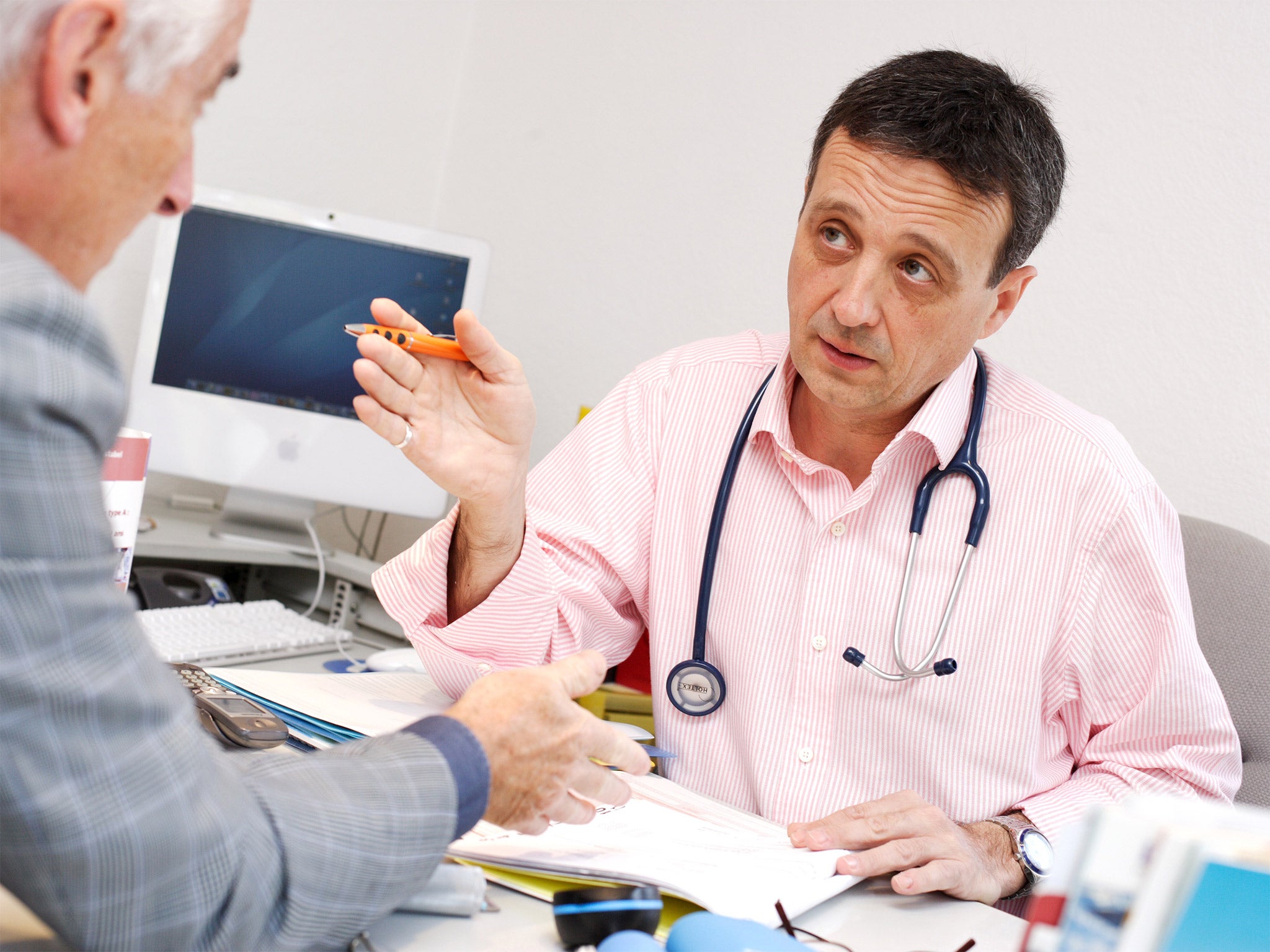Are the family doctor's days numbered? Local GPs increasingly choosing federalism
NHS believes resources are better used pooled

Your support helps us to tell the story
From reproductive rights to climate change to Big Tech, The Independent is on the ground when the story is developing. Whether it's investigating the financials of Elon Musk's pro-Trump PAC or producing our latest documentary, 'The A Word', which shines a light on the American women fighting for reproductive rights, we know how important it is to parse out the facts from the messaging.
At such a critical moment in US history, we need reporters on the ground. Your donation allows us to keep sending journalists to speak to both sides of the story.
The Independent is trusted by Americans across the entire political spectrum. And unlike many other quality news outlets, we choose not to lock Americans out of our reporting and analysis with paywalls. We believe quality journalism should be available to everyone, paid for by those who can afford it.
Your support makes all the difference.The term “family doctor” has obvious appeal. Basically it means "GP". But it also conjures up an image of a benevolent figure, possibly wearing a bow tie, who is both a trusted medic to all the family and a pillar of the local community.
It is a powerful idea, and one that has become a dog whistle for Conservative health ministers. But are its days finally numbered?
New research by the Nuffield Trust think tank has revealed that the number of GP practices run by a single doctor has more than halved from 1,717 in 2006 to 891 last year, as a new GP workforce emerges that is increasingly seeking the flexibility of working part-time or for a salary – rather than setting up a GP surgery as a small business and settling down into a community.
At the same time the number of GP practices with 10 or more doctors has grown by 75 per cent.
A “move away from the traditional family doctor model” of independent GP-owned practices, towards groups of practices working together to provide a much wider range of health services to patients, and even employing hospital specialists, was backed by nine out of 10 of a panel of 100 healthcare managers and doctors consulted by the Nuffield Trust.
Change is needed, NHS leaders believe, because the health of the nation has changed. Whereas before a GP's work was generalist, today an increasing majority of their time is taken up with patients who are elderly and have complex health needs.
The pressures of caring for this growing and ageing population have taken their toll on general practice, with growing waiting lists and increasing workloads. At the same time, funding for general practice is in decline, falling by £300m last year alone, the Nuffield Trust said.
In a major report last month, NHS England set out a vision to resolve the problem, involving many GP practices in single areas clubbing together to form large federations that would have the spending power to provide many of the services – such as specialist geriatric care, or specialist diabetes services – that currently require a trip to hospital.
In other areas, hospitals themselves will employ salaried GPs.
Mark Dayan, policy officer at the Nuffield Trust, and lead author of the group’s report, said that while the demise of the single-doctor practice would likely continue, the things that patients tend to like best about the family doctor model – having a GP who knows you and your family well – need not be lost.
“There isn’t much of an excuse for this kind of trend to lead to a decline in continuity with the doctor you see,” he said. “The fact your doctor moves to working in a larger organisation should in fact make it easier for him or her to ensure he or she’s the one that’s free to see you.”
Single doctor practices would also likely remain in small towns and villages, he said.
“We hope that networks and GPs working together locally will actually, by sharing money and sharing staff, help to keep some of those smaller practices open,” he said.
However, federations are a controversial proposal for GPs, a group of doctors who have, in the past, fiercely defended their independence.
Dr Peter Swinyard, chairman of the Family Doctor Association, said that while most doctors were beginning to recognise the need for change, GPs would need financial support to set up new “cooperative” ways of working.
“In 1966, when they wanted individual GPs to work together, they introduced something called the group practice allowance, that worked well and was the foundation of modern general practice,” he said. “What we need now is not for individual GPs working together but individual practices working together. That will take some pump priming.
“One size doesn’t fit all. We cannot be made uniform. Patients choose different things. Some would prefer a big practice with lots of facilities and nurses,” he added. “Others like the bloody-minded individualism of their own GP and want to see their same doctor every time.”
Join our commenting forum
Join thought-provoking conversations, follow other Independent readers and see their replies
Comments